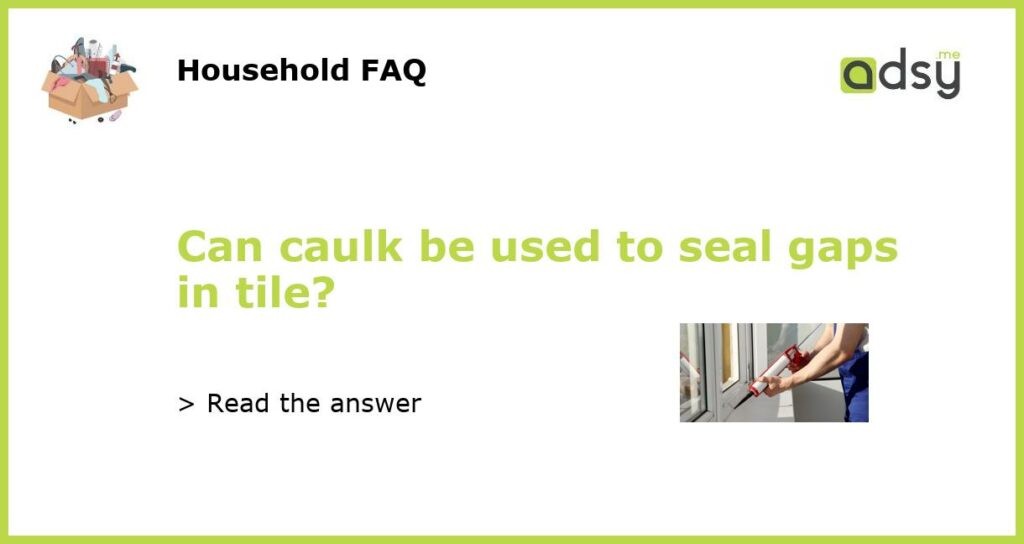Understanding Caulk and its Uses in Home Improvement
When it comes to home improvement, caulk is an essential tool that can be used to seal gaps and cracks in various surfaces. It is a flexible material that can fill in spaces to create a smoother and more polished look. While caulk is commonly used in areas such as windows and doors, many people wonder if it can also be used to seal gaps in tile.
Caulk as a Sealant for Tile Gaps
Yes, caulk can indeed be used to seal gaps in tile. In fact, it is highly recommended for this purpose as it provides a durable and waterproof solution. Tiles are often installed with grout, which is a mixture of cement, water, and sand. While grout helps hold the tiles together, it is not as flexible as caulk and can crack over time due to movement or settling of the floor or walls. This is where caulk comes in, as it can flex and move with the tile, preventing cracks and gaps from reappearing.
Choosing the Right Caulk for Tile Gaps
Not all caulk is suitable for sealing tile gaps, so it is important to choose the right type for the job. Silicone caulk is the most commonly used option for sealing tile gaps. It is moisture-resistant, flexible, and has excellent adhesion properties. Additionally, it is available in a variety of colors to match the tile and grout. Avoid using acrylic or latex caulk for tile gaps, as they are not as durable or waterproof.
Preparing the Tile Gap for Caulk
Before applying caulk to tile gaps, it is essential to properly clean and prepare the area. Use a scraper or putty knife to remove any old caulk or grout from the gap. Clean the gap thoroughly with a mild detergent and water solution, and allow it to dry completely. It is also recommended to use a tile caulk primer before applying the caulk, as it enhances adhesion and ensures a longer-lasting seal.
Applying Caulk to Tile Gaps
Once the tile gap is clean and dry, it is time to apply the caulk. Cut the tip of the caulk tube at a 45-degree angle, and load it into a caulk gun. Apply even pressure on the caulk gun trigger to release a steady stream of caulk into the gap. Use a caulk smoothing tool or your finger to smooth out the caulk and create a neat finish. Wipe away any excess caulk with a damp cloth before it dries. Allow the caulk to cure for the recommended time before subjecting it to water or heavy use.

